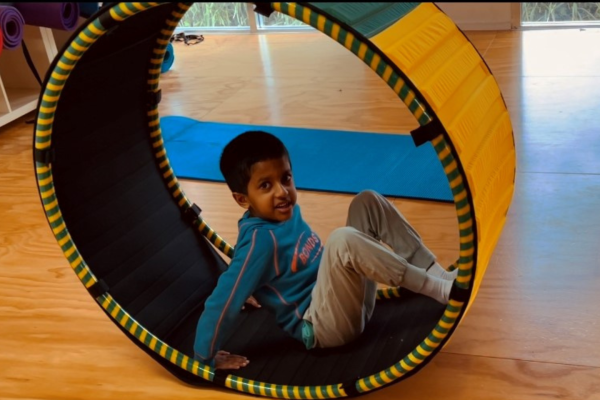
10 tips for AAC device success
1. Make it motivating
Learning new AAC skills can be tricky. The reward needs to be worth the effort. Find what is motivating for your child – it will be different for everyone.
2. Teach in a natural context
Teach your child within their regular routines and activities. This helps them relate what they are learning to what they already know and increases retention of new learning.
3. Model
When introducing an activity, model the activity prior to expecting your child to participate. Take a turn as a participant rather than an instructor to show them what they need to do and what the reward is.
4. Secure the equipment
Mount or secure the equipment and accessories being used, so that it is in a consistent position each time your child tries to access it.
5. Wait, wait, wait
Leave plenty of time for your child to process what they want to do and to initiate their reaction. Prompts can interrupt a child’s intent. Imagine everything the child needs to do to engage with the activity: • Process instructions• Understand what is required of them• Figure out how to respond• Engage muscles• Focus on and perform the action While some prompts can be necessary when learning, there should always be a plan to phase them out after a period of time to prevent the child becoming dependent on them and the prompt hierarchy should be followed.
6. Use a prompt hierarchy
When there is a need to prompt, use a hierarchy to provide the least intrusive way appropriate. This gives your child the opportunity to be as independent as possible. Physical prompts should always be used as a last resort as they can make your child focus on the touch sensation rather than the activity.
• Wait – allow an opportunity to complete the activity independently.
• Environmental cue – look at or draw attention to the activity.
• Gesture – Indicate with a motion what you want your child to do.
• Model – Take a turn of the activity as a participant to show your child what you want them to do.
• Verbal prompt – Prompt directed at the activity rather than the method – e.g.“I want to see the Elmo dance” rather than “Hit the switch”.
• Partial physical prompt – Allow your child to finish the movement e.g. initiate movement at the elbow and then allow student to complete movement.
• Full physical assistance – Hands-on assistance to complete the activity.
7. Provide activity focused feedback
Provide feedback on the activity rather than giving instructions; e.g. – “I liked that song, what’s next?” rather than “Hit it again”.
8. Repetition with moderate differences
Provide lots of repetition with slight difference to keep your child engaged. This doesn’t have to be a whole new activity but a variation in the activity to keep it interesting. Moderate differences in the activity are needed to keep them engaged to learn. 1000s of repetitions will be needed for the movements required to become automatic.
9. Balance the motor and cognitive demands
Learning new AAC skills may be very difficult, both physically and cognitively. When teaching a new motor skill, initially keep the cognitive demands of the activity low. Once the motor plan becomes automatic you can then increase the cognitive demands of the activity. Short frequent opportunities throughout the day to learn these skills may be more beneficial than long sessions.
10. Remove the equipment when not in use
Your child should never attempt to access the activity and have nothing happen, for example your child shouldn’t be placed in front of an eye gaze computer without eye gaze functioning, or a switch and mount should not be left in place when not connected to an activity, as this will work against the goal of teaching your child that their AAC device gives them choice and control.
Information provided by The Independent Living Centre WA www.ilc.com.au







